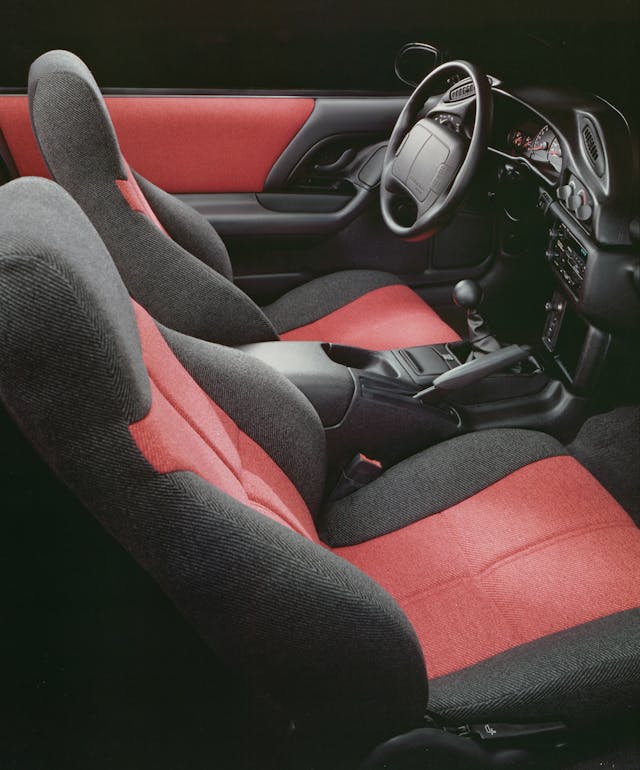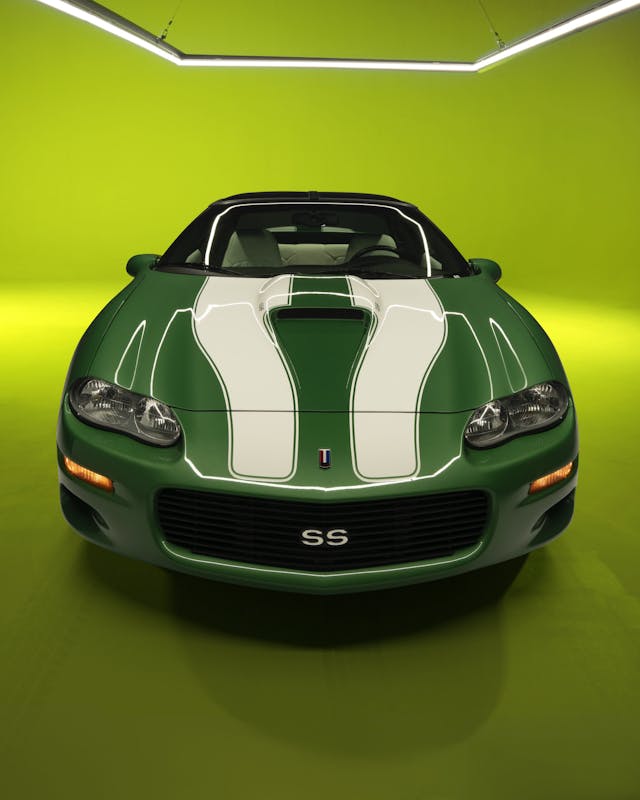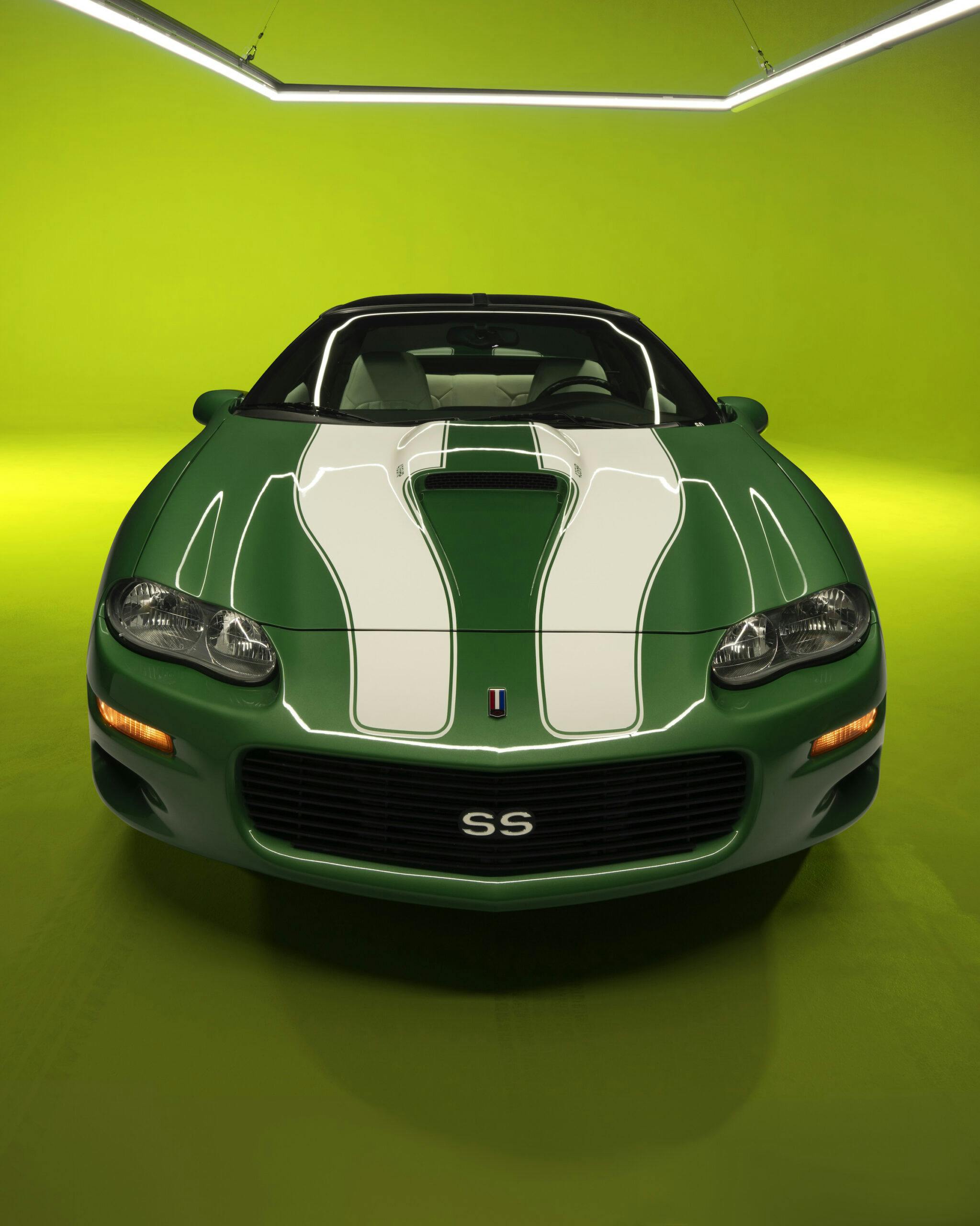Media | Articles
Fourth-Gen Camaro (1993–2002): The one that died first
With the Camaro nameplate retiring soon, we’re honoring the beloved two-door with a series of love letters, fun lists, and memories that you can follow here. Many performance cars, especially nowadays, aim for an anodyne version of perfection that only a few can afford. The Camaro is for the rest of us—and it’s always ready to party. Still, we can’t pretend the car we’re about to celebrate over the next week or so is perfect. That in mind, let down your hair and come with us for a deep dive into what, exactly, makes the fourth-gen Camaro so bitchin’.
It’s more or less common knowledge that the Ford Mustang nearly became a front-wheel-drive car in the 1990s, a diversion that ultimately produced the Probe. The Camaro had its own brush with front-drive around the same time, yet the program failed to meet weight, cost, and safety targets. This was pretty much standard operating procedure for General Motors at the time. The company posted its largest-ever loss at $23.5B, a hangover from years of binging on ill-considered technological cure-alls (plastic-bodied Saturns; automated factories where robots wound up spray-painting each other; Lotus).
Despite all that, a new rear-drive Camaro arrived for 1993, and it was a beast. GM had just put the finishing touches on the LT1, the most significant update to the small-block V-8 since its introduction in the 1950s. In the Camaro, it made 275 horsepower, a 30-hp bump compared with the outgoing car and a 40-hp advantage over the contemporary Mustang GT. It sat way back, the block tucked under the cowl of the windshield for better weight distribution. “It’s almost a mid-front-engine car,” said John Heinricy. (Try to remember that if you’re ever changing the rear spark plugs on one.)
It also had a sophisticated double wishbone front suspension, although getting it to production required a King Solomon–like choice: “The guy who was responsible for the financials said, ‘There’s just no way the program can afford to do a new front and an independent rear suspension,’” recalled Heinricy. “I said, ‘Let’s do the front and hopefully in a couple of years we can come in with a program to upgrade the rear.’”
That proved to be wishful thinking. Annual production at the outset was well over six figures but dropped to around 60,000 a year in the late 1990s. Those volumes for a sports car don’t sound particularly bad to modern ears. Yet GM had miscalculated. “We had configured Sainte-Thérèse [a factory in the suburbs of Montreal] to build two shifts of Camaro and Firebird,” remembered Scott Settlemire, who was product manager for the car in the late 1990s. “By ’96, we went down to one shift, and that’s when you lose stupid amounts of money.”
Marketplace
Buy and sell classics with confidence
What went wrong? It’s tempting to point to the broader shift in consumer taste, and this was indeed the period when many would-be coupe buyers started finding their way into small SUVs. Yet as always for the Camaro, there is the inconvenient counter-factual of the Mustang, whose sales skewed upward during the decade. “It’s easy for an engineer to say this, but I blame marketing,” said Heinricy. “They just didn’t take the car seriously.”

The styling didn’t help. Baby boomers, in their millions, were entering midlife and beginning to look back, and much of the car industry was pivoting to indulge their nostalgia. Cars like the Mazda Miata and Dodge Viper winked at the past, and Volkswagen’s New Beetle, shown in concept form in 1995, gave it a full-on bear hug. And yet the wedge-like fourth-gen Camaro, largely the work of GM’s Advanced Studio in Warren with influences from young designers based in California, continued to gaze straight ahead. “Chuck Jordan [GM design chief from 1986 to 1992] was always looking at the horizon—creating the next big thing,” said John Cafaro, who led the studios that designed the Camaro and the Corvette.

By the time the Camaro got a mid-cycle update for 1998, rumors abounded that it was on death’s door. The car itself begged to differ. The all-new aluminum LS1 V-8, which had debuted in the C5 Corvette just a year earlier, brought horsepower unseen since the early 1970s. In the Z28, it put out 305 horsepower; SS models, fitted by after-marketer Street Legal Performance with a cold-air intake and freer-breathing exhaust, made 320 horsepower. It has become gospel in Camaro circles that these numbers were conservative. Heinricy denies underrating the cars but notes that little other than tuning software differentiates a Camaro’s LS1 from a Corvette’s. “It was a very simple thing for somebody in the aftermarket to do a calibration that brings that all to life.”
The car persisted and in its final years became profitable again, per Settlemire, thanks to higher take rates on those V-8s. Yet it ultimately met its demise due to banalities of crash standards. “There was a new head-impact standard that came on to the books on September 1, 2002, and in order for us to meet that, we would have had to severely pad the windshield opening,” Settlemire said. “And it’s kind of hard to see out of a windshield of a fourth gen, anyway.”
Just over 40,000 Camaros made it out of the factory that final year, less than a third of the production of the rival Mustang, which was strutting about with a new Bullitt package. The irony was not lost on the car’s internal champions. “Ford saw the Mustang as something really important… they decided to go after it and keep it going,” said Heinricy. “GM just didn’t feel that way about Camaros.”
***
Check out the Hagerty Media homepage so you don’t miss a single story, or better yet, bookmark it. To get our best stories delivered right to your inbox, subscribe to our newsletters.













My favorite Camaros are the ’69 and the 4th gen F bodies. I have a ’95 Z28 6spd conv. I had to order special. Unlike Ford, GM marketing of this car was terrible. They must have been more interested in higher volume models. The color and trim choices were quite limited compared with Mustang and availability. The quality of the interior was disappointing, apparently many persons felt that way as the dealer had an after market company install high quality leather in place of the original. I am 86 and have always loved Mustangs and Camaros and still have my ’66 Mustang conv.